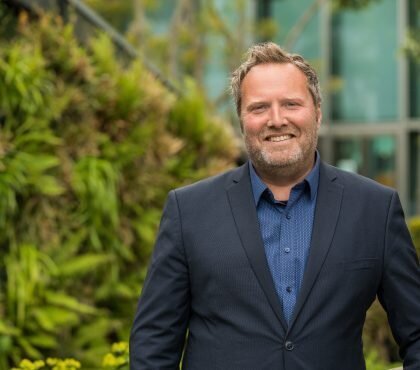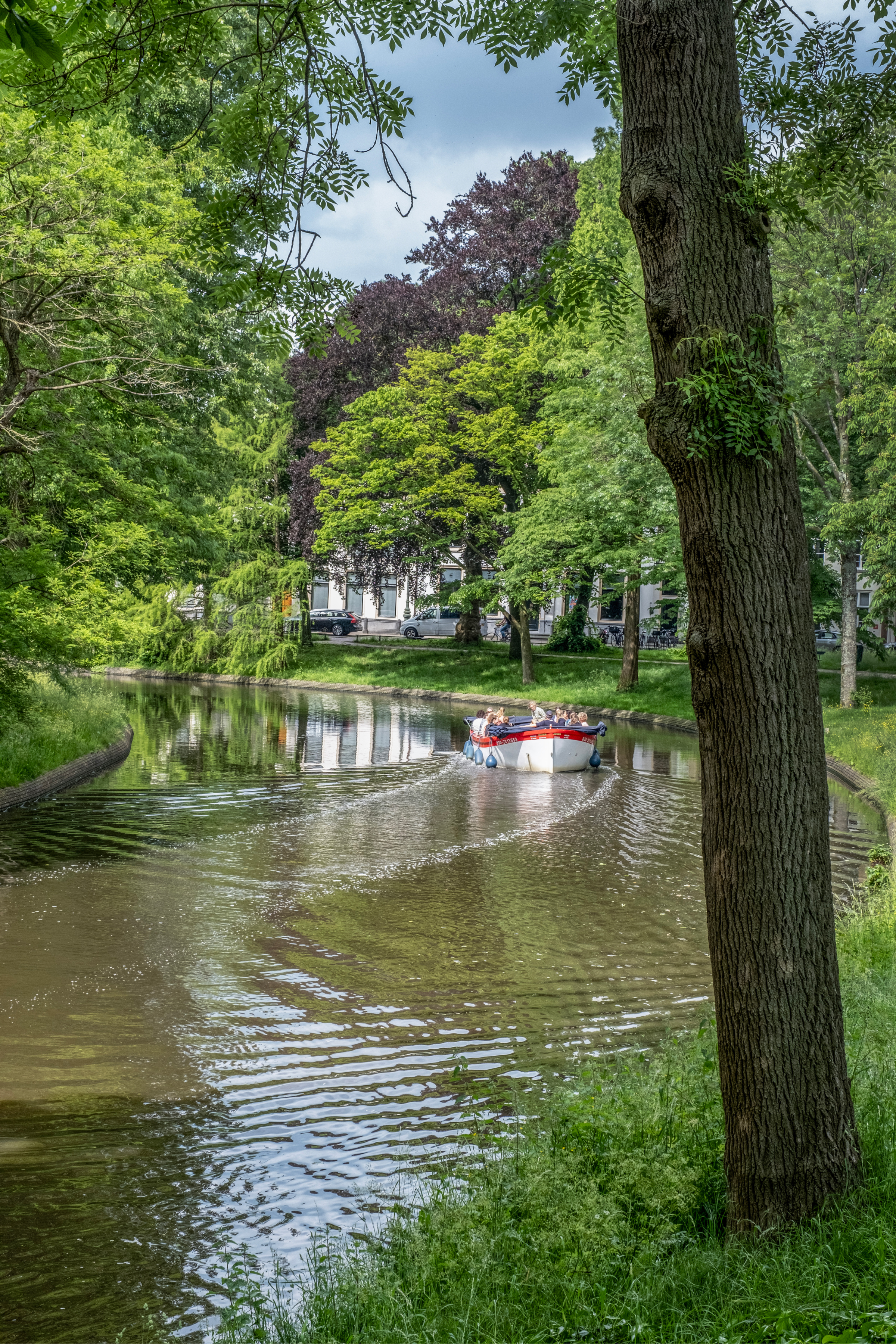Measuring and monitoring green-blue adaptation
Many towns and cities in the Netherlands have been working on the introduction of green and blue climate adaptation measures – Nature-based Solutions – for a decade now. For example, our city streets are now home to surface initiatives: bioswales, green roofs, rain gardens and water plazas, to name just a few. But there are also underground systems such as water-storage drains, infiltration drains and ‘crate fields’.
Major cities in the Netherlands are now implementing climate adaptation in the form of green facilities. These are often small pilot projects. Even so, Nature-based Solutions are increasingly being included in climate adaptation calculations.
City of Leiden: lots of greenery and trees
‘The city authority of Leiden is making several neighbourhoods more sustainable. In many areas, we need to replace the drains and we are combining that work with other measures such as ways to make these areas more climate-resilient and strengthen biodiversity. That involves adding many square metres of greenery and trees to provide shade and cooling, as well as to allow the infiltration of rainwater.
In parking spaces, we try to combine functions by installing paving that allows water to pass through and vegetation to grow. It is useful here to think about the function you are aiming for, but also to monitor whether that function is maintained in the long term and whether it can be managed.
Deltares took the first step recently by monitoring some of the locations in the city where we have installed permeable paving for water and vegetation. We have found that we are not the only city tackling these questions. It is important to continue sharing knowledge and results with each other rather than all reinventing the wheel ourselves.’

Ashley North
Alderperson for Climate, Mobility & Finance of the City of Leiden
Annemarij Kooistra
Annemarij Kooistra is programmamanager bij Gemeente Amsterdam, afdeling Ingenieurswetenschappen, en verantwoordelijk voor de ontwikkeling van transities in assetmanagement van bruggen en kademuren. Onder haar leiding werden circulaire strategieën voor op waarden gebaseerde beslissingen ontwikkeld over te nemen maatregelen voor een veilig en toekomstbestendig gebruik van bruggen en kademuren, evenals onderzoek en innovatie om de levensduur van deze constructies te verlengen.
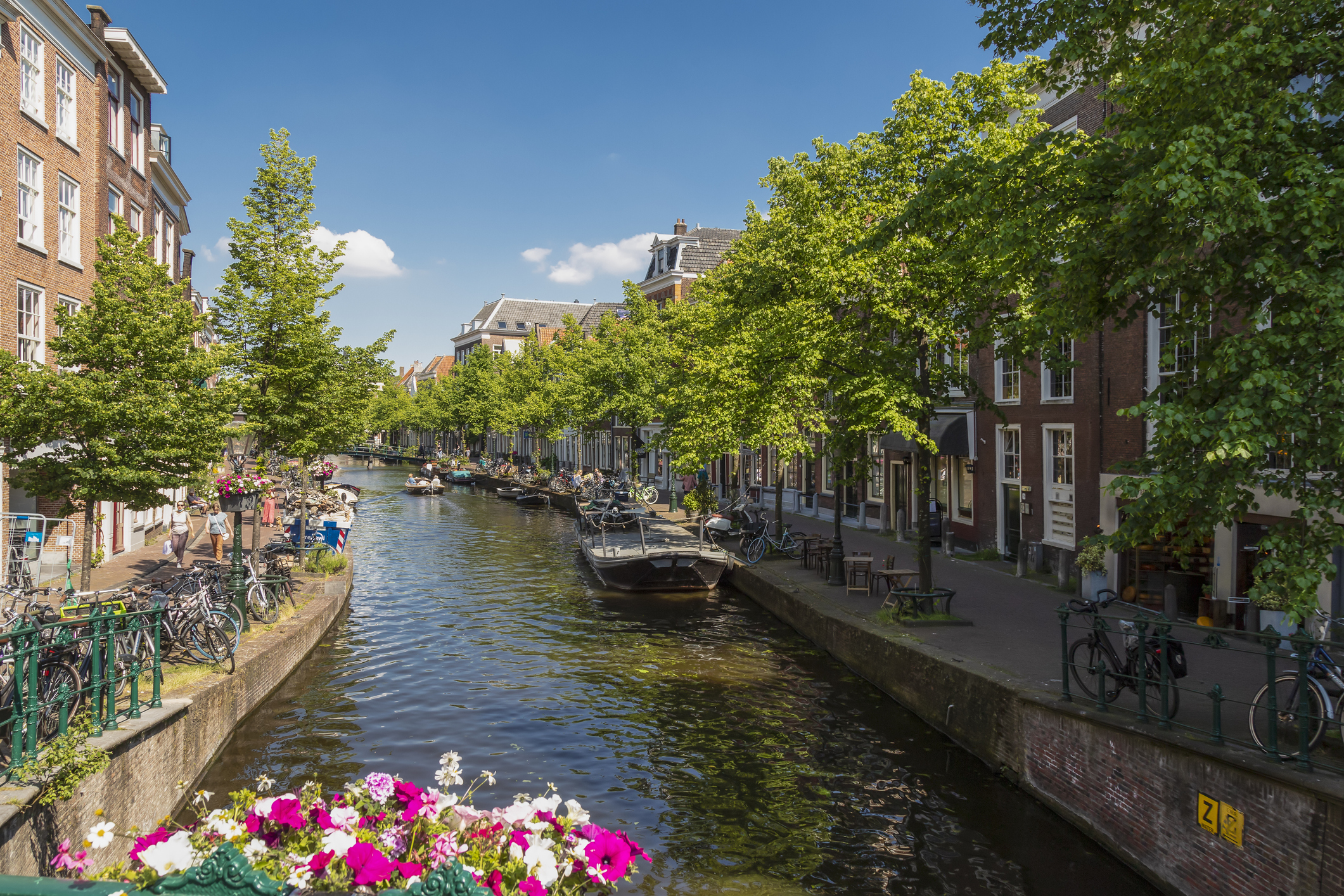


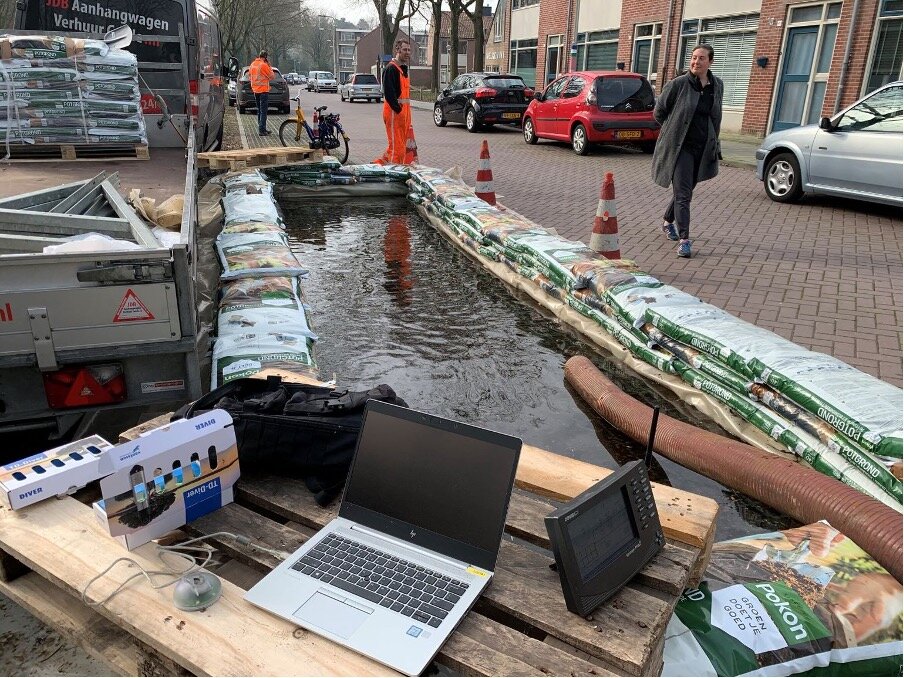



Local participation
With all the measurements in the city, it is important to involve a range of stakeholders, including local residents, as much as possible. In the field, we discuss what is needed to make facilities work better. Can enough water be stored to mitigate problems with surplus water? Will rainwater have enough time to infiltrate and replenish groundwater levels?
Residents are happy to join in and share their experiences with water surpluses and shortages, such as how greening public spaces can contribute to climate adaptation. But also to explain how local people themselves can contribute with other plants and flowers.
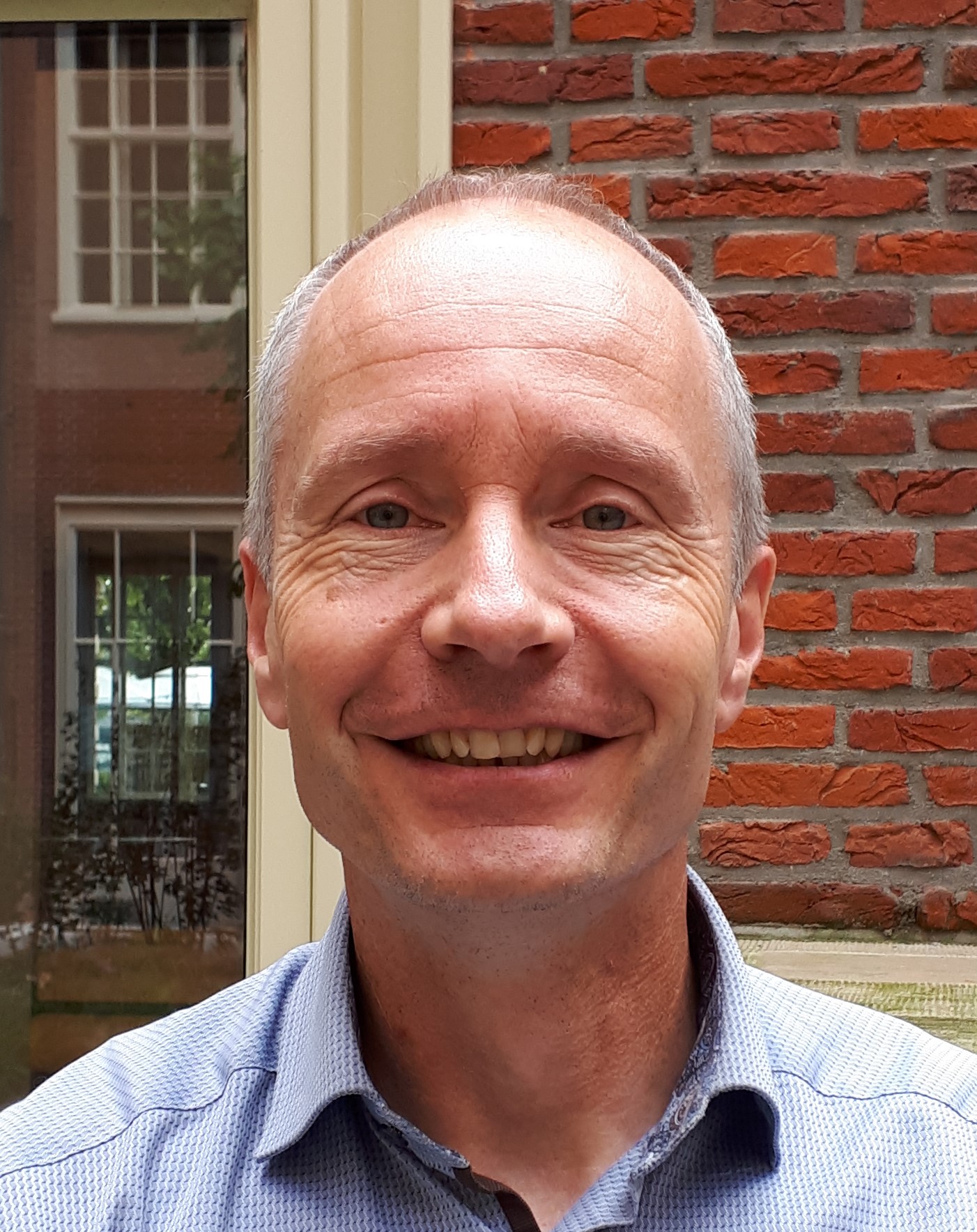
Danny Boers
Danny Boers works as a strategic asset management consultant for the City of Leiden and he is active in, among other things, the city deal for public spaces. We spoke to Danny about what it takes for facilities to work better over the course of the years.
Read the story
Permeable pavers,
Zoeterwoude
Permeable pavers were put down in the Margrietstraat location in Zoeterwoude. Water-permeable paving with drainage joints was combined here with green parking spaces on turf blocks. This allows the system to retain rainwater and to use drains to deliver moisture to the vegetation during dry periods. In addition, rainwater runs off more slowly and the water infiltrates the soil.
Photocollage
Reconstruction Margrietstraat
‘Klimaat heeft aandacht van bewoners en overheid’
Danny Boers is adviseur strategisch assetmanagement bij de gemeente Leiden en onder andere actief in de city deal openbare ruimte. We spraken Danny over wat er nodig is om voorzieningen beter te laten functioneren door de jaren heen.
‘In 2022 hadden we te maken met hevige regenval in het binnenland, vorig jaar april viel er kortstondig veel regen in Paramaribo. Het was de ergste overstroming in de stad die ik heb meegemaakt. Scholen moesten sluiten en mensen konden hun huis niet uit vanwege het hoge water. Vlakbij mijn huis stond het water tot twintig centimeter hoog. Door het tropisch klimaat groeit de vegetatie snel waardoor goten en watergangen snel verstopt raken.’
Verbindende schakel
‘Als enige Universiteit zijn wij gevraagd om deel te nemen aan het Samenwerkingsprogramma op het gebied van water, bodem en klimaat. Toen het team van Deltares hier was, richtte ik me vooral op het voorbereiden van de GIS-training die we gezamenlijk gegeven hebben aan medewerkers van het Ministerie van Openbare Werken. Daarnaast zorg ik, samen met een team van enthousiaste studenten voor het maken van kaarten, data-collectie en het beheer daarvan.
Deltares fungeert als verbindende schakel tussen de betrokken medewerkers, enerzijds de technici en anderzijds de overheidsfunctionarissen die dit vertalen naar beleid en uitvoering. Door dit samenwerkingsverband is er meer contact tussen het ministerie en de universiteit en weten we van elkaar waar we mee bezig zijn. Ik merk dat we stappen vooruit maken. Na die zware overstroming vorig jaar is er nu vaker onderhoud op de watergangen. Laatst was er weer een hevige bui, maar het water op straat vloeide snel weg. We zijn er nog niet, maar het veranderende klimaat heeft nu de aandacht van de bewoners en overheid.’
Danny Boers works as a strategic asset management consultant for the City of Leiden and he is active in, among other things, the city deal for public spaces. We spoke to Danny about what it takes for facilities to work better over the course of the years.
‘It is important to makes agreements about maintenance and who is responsible for it. Here in Leiden, for example, I got the vegetation management and road departments to meet around the same table. The agreement now is that permeable pavers will be the responsibility of the roads department. Because we still have little long-term experience with this form of paving, Leiden now has pilot projects in place. For example, we are looking at the maintenance of different types of permeable pavers and how long they last. We are also testing how often we need to mow, for example. The City of Leiden has high expectations for permeable pavers in terms of water infiltration and biodiversity, and also circularity. Designers take these targets into account. In the Gasthuis area, for example, we laid used cobblestones in open braid patterns, which meant we didn’t need as many. And we also hope this will lead to more infiltration. Field trials are very important in this respect. You want to solve things but that means you have to be able to conduct tests once the design is in place. Does the rainwater now actually run off slower? Does enough rainwater infiltrate into the soil and what is the effect on the groundwater level? The field trials help us to establish a picture and justify the decisions we make. It is great that experts are helping us, and in turn sharing this knowledge with other cities.’


Residents may have objections to the greening of public spaces for various reasons. Some fear that more greenery will lead to an increase in insect infestations, such as mosquitoes. Others are concerned about changes in the neighborhood's appearance or aesthetics due to the addition of greenery. Through participatory research, these objections can be addressed, and the effectiveness of various Nature-based Solutions (NbS) can be demonstrated.
An example of a measure that Deltares has recently researched in various cities is permeable pavements. In these pavements, grasses or other plants grow in open spaces between the stones, also known as grass pavers. The pavement itself can be made of concrete, but also of plastic. Permeable pavement allows rainwater to seep into the soil.
Permeable pavers, Zoeterwoude
Doorgroeibare verharding,
Zoeterwoude
In de Margrietstraat in Zoeterwoude is een doorgroeibare verharding aangebracht. Hier is een waterpasserende verharding met drainvoegen gecombineerd met groenparkeren op grasroosters. Zo kan het systeem het regenwater vasthouden en met drains het groen voorzien van vocht in droge tijden. Daarnaast is gezorgd voor een vertraagde afvoer en infiltratie van het regenwater.
Fotocollage
Reconstructie Margrietstraat
Danny Boers
Danny Boers is adviseur strategisch assetmanagement bij de gemeente Leiden en onder andere actief in de city deal openbare ruimte. We spraken Danny over wat er nodig is om voorzieningen beter te laten functioneren door de jaren heen. Ook over de doelen van de Gemeente Leiden als het gaat om Nature based Solutions en het belang van praktijkproeven.
'Het is belangrijk dat er afspraken worden gemaakt over het onderhoud en wie daarvoor verantwoordelijk is. Ik bracht hier in Leiden bijvoorbeeld de afdelingen groen en wegen bij elkaar. De afspraak is nu dat doorgroeibare verharding de verantwoordelijkheid is van de afdeling wegen. Omdat we nog weinig ervaring hebben met deze vorm van verharding op lange termijn heeft Leiden nu pilots lopen. We kijken dan bijvoorbeeld naar het onderhoud van verschillende soorten doorgroeibare verhardingen en hoe lang ze meegaan. We testen ook hoe vaak je bijvoorbeeld moet maaien. De gemeente Leiden verwacht veel van doorgroeibare verharding als het gaat om waterinfiltratie en biodiversiteit, maar ook circulariteit. Ontwerpers nemen deze doelen mee. In de Gasthuiswijk bijvoorbeeld hebben we gebruikte klinkers in open vlechtverband neergelegd waardoor er minder nieuwe klinkers nodig waren. De extra infiltratie willen we daarmee ook realiseren. Praktijkproeven zijn hiervoor erg belangrijk. Je wilt iets oplossen maar dan moet je dat ook wel kunnen toetsen als het ontwerp is uitgevoerd. Stroomt het regenwater nu inderdaad minder snel af. Infiltreert er voldoende regenwater en hoe is het effect op het grondwaterpeil? De praktijkproeven helpen hier inzicht in te krijgen en keuzes te verantwoorden. Het is fijn dat kennispartijen hierbij helpen en deze kennis ook weer delen met andere steden.'
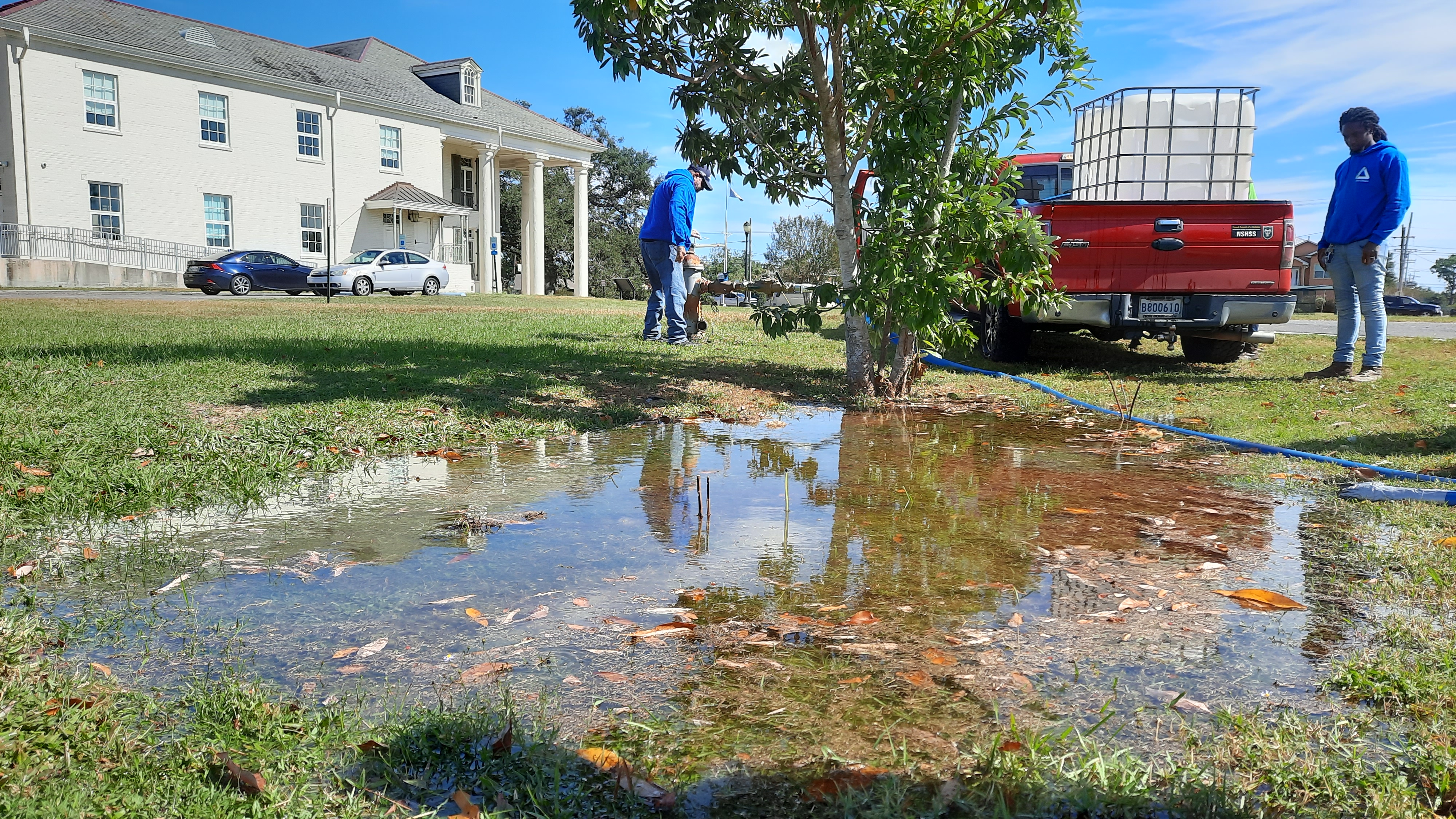

New Orleans, Chris Lang ‘seeing first-hand how Nature-based Solutions work’
Chris Lang (on the left) of New Orleans works as a project manager at the Office of Stormwater and Green Infrastructure, and he manages plans based on the National Disaster Resilience Grant that the city received on behalf of that organisation. In the Gentilly Resilience District, he supervises projects that map climate risk indicators and monitor organisms and groundwater, and then report on the benefits, financial feasibility and effectiveness of Nature-based Solutions.
Read the story
New Orleans, Chris Lang ‘seeing first-hand how Nature-based Solutions work’
Chris Lang (on the left) of New Orleans works as a project manager at the Office of Stormwater and Green Infrastructure, and he manages plans based on the National Disaster Resilience Grant that the city received on behalf of that organisation. In the Gentilly Resilience District, he supervises projects that map climate risk indicators and monitor organisms and groundwater, and then report on the benefits, financial feasibility and effectiveness of Nature-based Solutions.
The city of New Orleans is regularly on the front line of storms coming from the increasingly warm Gulf of Mexico. New Orleans has also recently run up against the environmental and societal challenges associated with persistent drought and heat. The effects of climate change and land subsidence make the city even more vulnerable. In the past, the city used hard infrastructure as protection. But repeatedly upgrading that infrastructure costs a lot of time and money. So the city is now looking at Nature-based Solutions to strengthen the infrastructure in place. Lang: ‘It makes sense to plant trees and more native vegetation to prevent heat stress, absorb rainwater and capture CO₂. We know that paving and pumping not only make the city warmer but also exacerbate land subsidence. By introducing bioswales and rain gardens, we retain more rainwater in the soil, allowing it to bypass the drainage system. Pumping up less rainwater reduces wear and tear in our pumps, which also use less energy. So it is important to use Nature-based Solutions to increase the overall resilience of the city.
A good example of a Nature-based Solution of this kind in the city is the Pontilly Stormwater Network: a network of basins and bioswales that can collectively absorb 9 million litres of water from the low-lying, flood-prone areas of Pontchartrain Park and Gentilly Woods. We support non-profit organisations like SOUL that have taken the lead in planting trees in this area to cool neighbourhoods. The Wildair rain garden in Gentilly is another beautiful and practical green infrastructure installation that I like to visit, especially during or shortly after rain, to see for myself how it works.
We hope to use this type of solution in more locations. Before we do that, we need data and information. The first step on the road to reducing flood risks is studying the water and soil systems and understanding them in relation to the buildings and drainage infrastructure in place. That provides us with a basis to identify which areas are most susceptible to land subsidence. In that way, we can make evidence-based decisions about interventions. Deltares and local universities are helping us by conducting more research on Nature-based Solutions in cities.’
Chris Lang visited Deltares in April 2024 with a group of stakeholder organisations representing different areas in New Orleans. They exchanged knowledge about how cities can adapt to live more harmoniously with water. The delegation also visited various Dutch cities during their trip
Climate-adaptive measures in New Orleans
According to Daan Rooze, an urban water management expert (on the right), the effect of climate-adaptive measures depends very much on the local situation. ‘Weather patterns, the subsurface and other topographic features are important, but so are construction and management plans. We often work with local materials and knowledge.
In addition, maintenance varies depending on the location. Part of the work Deltares is conducting in the context of the National Disaster Resilience Competition (NDRC) fund involves testing urban climate adaptation measures in New Orleans, Louisiana. It has emerged that, given the measured permeability values, there are numerous opportunities for the local infiltration of rainwater. However, design flaws are resulting in the underutilisation of the design capacity. In addition, the research shows that, given the intense rainfall in New Orleans, small-scale green infrastructure should always be combined with a network of canals and ditches. Most of New Orleans is below sea level and, as in Dutch polders, there needs to be enough surface water to store intense rainfall. Bioswales alone aren’t enough.’
Would you like to read more about Nature-based Solutions in the city?
Chapter 8: Managing flood risk in Blue-Green Cities
